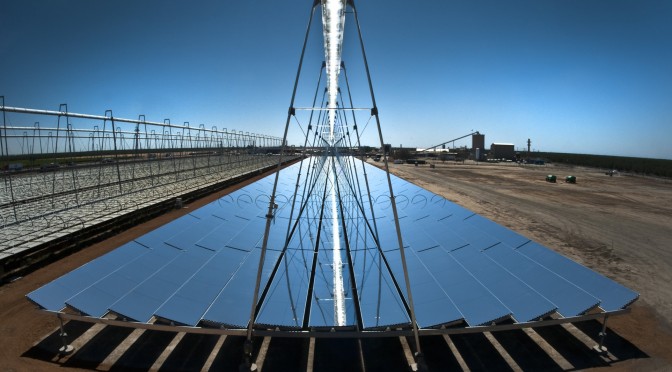The Chilean government will provide $85 million in total subsidies for renewables
–The first $20 million will go to the winner of a tender process to be launched in September
–Chile unlikely to reach target of increasing renewables to 20% of the country’s matrix by 2020
Despite initially ruling out subsidies to renewable energy projects, the Chilean government is shifting its strategy in light of Chile’s power supply hurdles, said Deputy Energy Minister Sergio Del Campo.
Over the next decade, Chile needs to nearly double its current installed capacity to 30,000 megawatts to keep up with rising demand, but long legal battles over some of the country’s large energy projects have put this target at risk.
President Sebastian Pinera’s administration aims to boost renewable energy sources, as they only represented 3% of the Andean country’s 2011 installed capacity of 16,857 megawatts.
“The government wants to speed up investments in renewables,” Mr. Del Campo told Dow Jones Newswires.
As part of a broader subsidy plan, the current administration will offer $20 million to the winner of an upcoming concentrating solar power tender to be launched in September, Mr. Del Campo said.
The tender for the construction in northern Chile of a 50-megawatt concentrated solar power plant–which produces heat from the use of mirrors or huge lenses–will have financing support from the Clean Technology Fund, the Inter-American Development Bank and the International Finance Corporation, Mr. Del Campo added.
“On top of the government grant, these institutions will provide [the winner] with a $65 million loan each at very competitive rates,” he noted.
Chile refocused its energy policy after neighboring Argentina cut gas exports to Chile in 2007. In this context, renewables surfaced as an option to meet energy demand, but are still far from being a reliable energy source.
One of the problems renewable energy projects face is the need for a significant capital injection.
The government has set aside $85 million to support renewables, Mr. Del Campo pointed out.
Chile’s largest energy consumers are mining companies, as the production of the country’s main export, copper, is electricity intensive. Copper represents 60% of Chile’s exports and 15% of the country’s gross domestic product.
If the country doesn’t provide energy solutions quickly, companies could delay mining investments, which are expected to total $100 billion in the 2012-2020 period, energy-sector analysts say.
In a new energy bill being discussed in Congress, the government aims to increase renewable energy sources to 20% of the country’s matrix by 2020.
Mr. Del Campo doubts the government will reach this goal on time. “Most likely, the expected 20% target will be achieved around 2025,” he noted.
The government is monitoring the delay in large energy projects such as 2,750-megawatt HidroAysen plant in Patagonia on environmental groups’ staunch opposition.
In the event HidroAysen doesn’t materialize, thermal generation through liquefied natural gas and coal would have to meet demand, Mr. Del Campo said.
Some power generators such as Colbun SA (COLBUN.SN), one of HidroAysen shareholders, had shown interest in developing its own LNG regasification project, while power producer GasAtacama SA, which feeds the northern SING grid, home to many of the copper mining companies, is in the process of building an offshore LNG regasification terminal.

